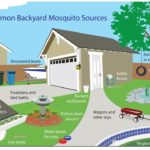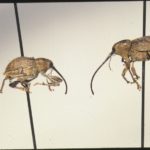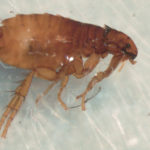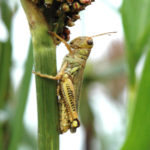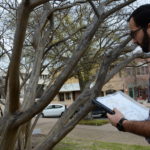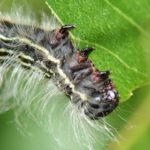by Paul Schattenberg, Texas A&M AgriLife Communications AUSTIN — Fire ants, hackberry psyllids and other insect pests are expected to make a return appearance in South Central Texas during the fall, according to Texas A&M AgriLife Extension Service entomologists. “Fire ant mounds are popping back up with the rain we’ve been getting lately,” said Wizzie… Read More →
IPM Hot Topics
Pecan weevils’ range growing warns AgriLife Extension expert
by Steve Byrns, Texas A&M AgriLife Communications COLLEGE STATION – Homeowners and pecan orchard operators are urged to watch for pecan weevils that can decimate a crop right up to harvest, said a Texas A&M AgriLife Extension Service integrated pest management specialist at College Station. “This is not a new pest, but what is new… Read More →
Website offers critical mosquito, disease information after Hurricane Harvey
by Gabriel Saldana, Texas A&M AgriLife Communications DALLAS — Visitors to the Mosquito Safari website at http://mosquitosafari.tamu.edu will find comprehensive information on common mosquitoes, the diseases they carry and instructions for controlling the pest, said Texas A&M AgriLife Extension Service entomologists. They said the information is critical in the wake of Hurricane Harvey, whose initial… Read More →
Texas A&M AgriLife entomologists: Floating fire ants, insect pests among flood hazards
by Gabriel Saldana, Texas A&M AgriLife Communications HOUSTON – Fire ants, as their colonies begin to flood, can join feet or tarsi to form water rafts, and they are more aggressive once in the floating formation, according to Texas A&M AgriLife Extension Service entomologists. But other insect pests can also pose human threats in flood… Read More →
Sugarcane aphids spreading throughout the Texas Panhandle
by Kay Ledbetter, Texas A&M AgriLife Communications AMARILLO – While sugarcane aphid populations are still low in grain sorghum fields across the Texas High Plains, a Texas A&M AgriLife Extension Service specialist in Amarillo said they are beginning to establish and could reach treatable numbers. Dr. Ed Bynum, AgriLife Extension entomologist, said sugarcane aphid populations… Read More →
Chiggers, fleas more noticeable in summer
by Paul Schattenberg, Texas A&M AgriLife Communications CENTRAL TEXAS – As people become more active in summer, so do a few familiar pests that keep Texans itching – and scratching — for relief, said Texas A&M AgriLife Extension Service entomologists. “This time of year there’s usually a significant increase in chigger and flea activity,” said… Read More →
Grasshoppers, thrips threaten Panhandle crops
by Kay Ledbetter, Texas A&M AgriLife Communications AMARILLO – Two insects threatening Texas Panhandle crops may require treatment, but definitely need to be monitored in young cotton, corn and sorghum crops, said a Texas A&M AgriLife Extension Service specialist. Dr. Ed Bynum, AgriLife Extension entomologist in Amarillo, said early stages of grasshoppers are emerging in… Read More →
Crape myrtle bark scale study reveals tree treatments to fight pest
by Adam Russell, Texas A&M AgriLife Communications OVERTON – The second year of survey data tracking crape myrtle bark scale has provided researchers information they believe will help mitigate the pest’s effect on trees, said a Texas A&M AgriLife Extension Service expert. Erfan Vafaie, an AgriLife Extension entomologist and integrated pest management program specialist in… Read More →
Kerns Named Statewide Integrated Pest Management Coordinator
COLLEGE STATION–The Department of Entomology and Texas A&M AgriLife Extension Service would like to welcome Dr. David Kerns to the faculty as Professor and Statewide Integrated Pest Management Coordinator. Kerns started December 1 and is based in College station. Before joining A&M, he was the Jack Hamilton Regents Chair in Cotton Production in the Department… Read More →
Walnut caterpillars hit West Central Texas pecan trees
Damage looks worse than it is by Steve Byrns, Texas A&M AgriLife Communications SAN ANGELO – Is your nut-laden pecan tree suddenly developing a “bald spot?” The culprit is probably the walnut caterpillar, said a Texas A&M AgriLife Extension Service entomologist. Dr. Charles Allen of San Angelo said he and his colleagues from Central and… Read More →
